Leuenberger / Abbas: Eine Sonic Collage
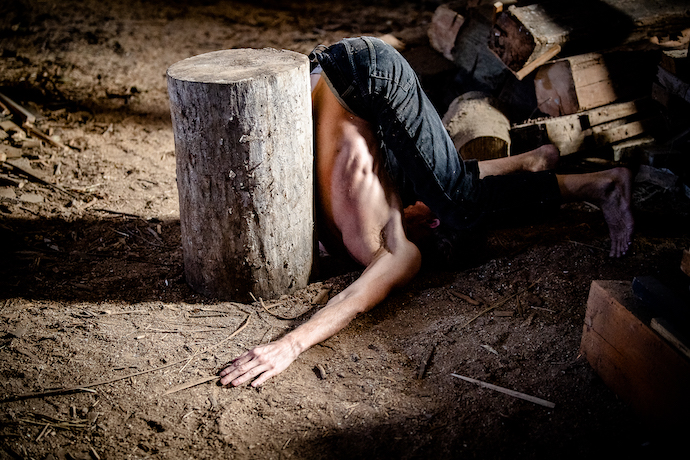
During the rehearsal process for «ABSENT BODIES» Chris Leuenberger and Fatin Abbas regularly exchanged voice messages. They publish these here in four podcast episodes, together with impressions of the outside eyes, who reflect their impressions with an outside perspective and quotes that inspired them.
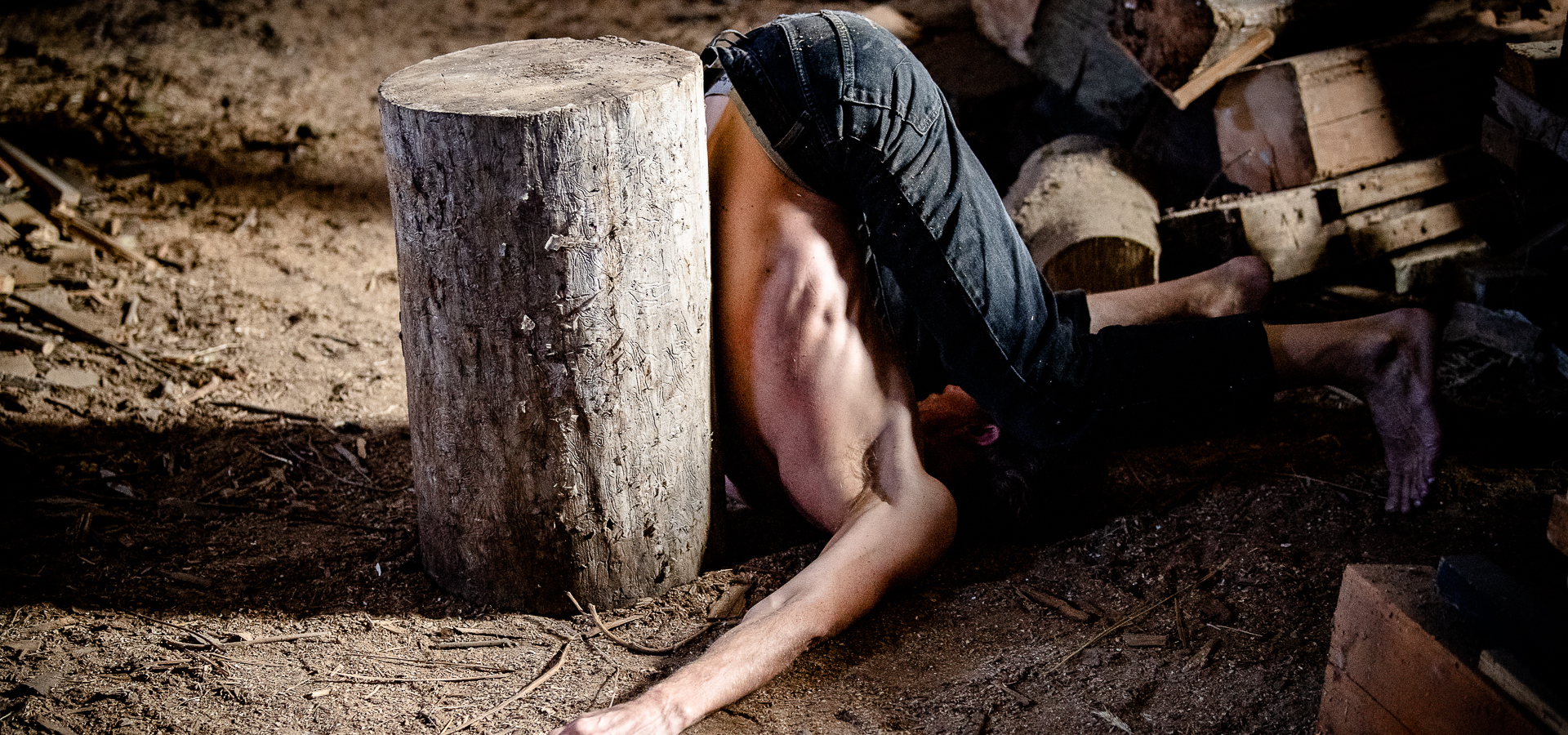
«Whiteness could be described as an ongoing and unfinished history, which orientates bodies in specific directions, affecting how they ‹take up› space and what they ‹can do›.» (Sara Ahmed - a phenomenology of whiteness)
The Quote by Sara Ahmed as Audio (in German):
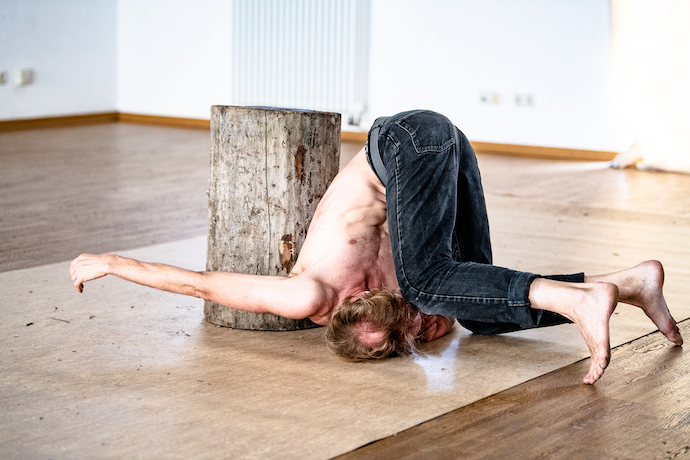
Episode 1: LOOKING (in German)
«I am a white American raised in the United States. I have a white frame of reference and a white worldview, and I move through the world with a white experience. My experience is not a universal human experience. It is a particularly white experience in a society in which race matters profoundly; a society that is deeply separate and unequal by race. However, like most white people raised in the US, I was not taught to see myself in racial terms and certainly not to draw attention to my race or to behave as if it mattered in any way. Of course, I was made aware that somebody’s race mattered, and if race was discussed, it would be theirs, not mine. Yet a crucial component of cross-racial skill building is the ability to sit with the discomfort of being seen racially, of having to pro-ceed as if our race matters (which it does). Being seen racially is a common trigger of white fragility, and thus, to build our stamina, white people must face the first challenge: naming our race.» (Robin DiAngelo- White Fragility: Why it’s so hard for white people to talk about racism. From Chapter 1, «The Challenges of Talking to White People About Racism»)
The Quote by Robin DiAngelo as Audio:
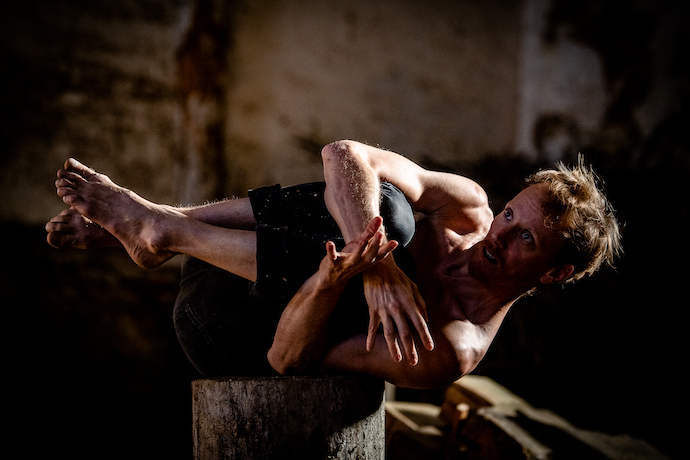
Episode 2 PROCESSING (in English):
«Individuality, complexity, ambiguity, flaws and mistakes are of course actually not privileges. They belong to the human being, without them a human being cannot be. And yet they are not granted to people who deviate from the norm. Thus, that which makes up a human being in his or her richness of facets be-comes a privilege. For those who are inspected, who are named, who are locked into the definitions of those who name: The Jewish Woman, The Black Man, The Woman with Disabilities, The Immigrant, The Muslim Woman, The Refugee, The Homosexual, The TransWoman, The Guest Worker. They are all named and considered collectively. As if it were possible to under-stand a person without spending time with him and getting involved in his par-ticular point of view. Without knowing his contradictions, his flaws, his mis-takes. Or would you say about yourself that you have understood yourself conclusively, that you yourself could make yourself understandable to another person in all your complexity? But the deviants are not granted this inscrutability. They are deprived of their individuality. Complexity becomes a privilege for them.» (Kübra Gümüsay - Sprache und Sein)
The Quote by Kübra Gümüsay as Audio:
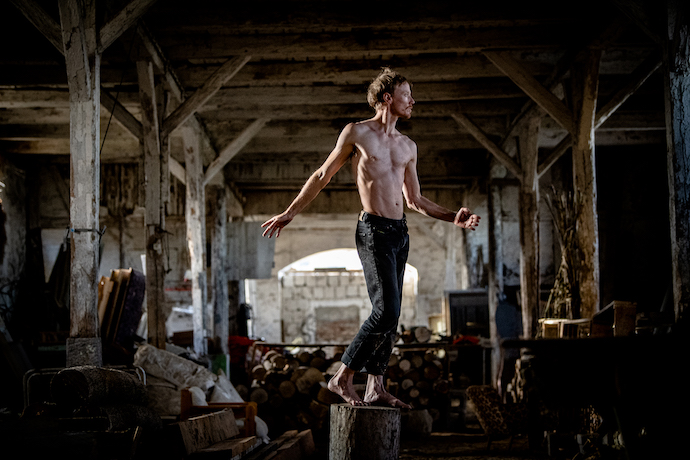
Chris Leuenberger:
«Als Fatin mich nach meiner Motivation für Absent Bodies fragte, fiel es mir schwer, mich klar zu positionieren. Denn es scheint, dass die Faktoren, die mich dazu gebracht haben, dieses Projekt zu initiieren, vielschichtig und komplex sind:
Ein Faktor war eine Art Midlife Crisis, die ich um meinen 40. Geburtstag herum vor etwa eineinhalb Jahren hatte: Ich begann, ernsthafte Zweifel an meiner Rolle als Choreograf und als Yogalehrer zu haben. Mir wurde klar: So verdiene ich also meinen Lebensunterhalt; indem ich andere Körper anweise, wie sie sich bewegen sollen. Ich begann mich zu fragen, inwieweit ich noch in der Lage war, diese Rolle mit Integrität zu verkörpern. Mir wurde klar, wie sehr ich mich mit dem Namen identifiziere, den ich mir als Künstler gemacht habe, wie sehr ich mich mit dem Respekt und der Anerkennung identifiziere, die ich für meine Arbeit bekomme, und mit den Jobs und Möglichkeiten, die ich für mich selbst geschaffen habe. Aber kreiere ich sie tatsächlich selbst, diese Jobs und Gelegenheiten? Oder fallen sie mir zu weil ich weiß und männlich und Schweizer bin?
Als Schweizer Künstler, der von Pro Helvetia gefördert wird, hatte ich das Privileg, meine Arbeiten in Südamerika und Indien zu zeigen und zu entwickeln, wo ich stark mit meinem weißen männlichen Privileg konfrontiert war. In unserem letzten Projekt „Ef_femininty“, das in Zusammenarbeit mit Marcel Schwald, einem Theaterregisseur aus Basel (ebenfalls ein weißer Cis-Mann wie ich) und den drei indischen Künstlerinnen Shilok Mukkati, Diya Naidu und Living Smile Vidya entstand, wurden mir die komplexen Machthierarchien aufgrund von Gender, Race und Klasse (oder im Beispiel Indien: Kaste), die in der postkolonialen Welt immer noch sehr präsent sind, sehr deutlich und bewusst.
In „Ef_femininity“ war es unumgänglich, diese Machtungleichgewichte sowohl im Probenprozess als auch in der Vorstellung zu thematisieren. Ich habe viel dazugelernt, nicht nur über Gender, sondern auch über Rassifizierung und über das Kastensystem. Ich habe begriffen, dass die Thematik höchst komplex ist und mir und uns allen noch ein langer Weg bevorsteht, um das alles erstmal zu begreifen und aufzuarbeiten.
Ich habe mich eigentlich nie als politischer Künstler gesehen. Aber das änderte sich, als ich Marcel kennenlernte und begann, mit ihm zusammenzuarbeiten. Er ist nicht nur Theaterregisseur, sondern versteht sich auch sehr stark als politischer Aktivist. Insbesondere der reichhaltige und intensive Kreationsprozess von „Ef_femininity“ öffnete mir die Augen. Ich war berührt und inspiriert von unseren Indischen Performerinnen Diya, Smiley und Shilok, für welche Kunstschaffen und politischer Aktivismus tief miteinander verbunden sind.
Weil ich Künstler*innen kennenlernte, die keine andere Wahl zu haben schienen, als politische Kunst zu machen, wurde mir klar, dass ich meine privilegierte Position nicht länger als selbstverständlich hinnehmen und von ihr profitieren konnte. Ich wollte mich dem System des institutionellen Rassismus, an dem ich als weißer Mann beteiligt bin, stellen und es hinterfragen. Ich spürte, dass ich mich nicht länger hinter meiner Naivität verstecken konnte und dass ich Verantwortung für mein Handeln und meine Entscheidungen übernehmen musste.
Ich wollte auch auf meine Kindheit und Jugend zurückschauen um herauszufinden, welche Rolle weißesPrivileg und Rassismus in meinem Aufwachsen in der Schweizer Provinz gespielt hatte: als ich mit unseren Nachbarskindern spielte, die vietnamesische Flüchtlinge waren (ich war meistens derjenige, der entscheiden durfte, welche Spiele wir spielen) oder als ich meinen ersten Freund im Gymnasium kennenlernte, der ein junger Mann aus Kamerun war.
Du fragst mich auch, warum ich mich entschieden habe, diese Themen durch Choreografie zu behandeln. Ich würde sagen, es ist einfach, weil dies das Medium ist, in dem ich ausgebildet wurde. Das Theater ist eine Plattform, die dazu beitragen kann, Sichtweisen zu verändern. Aber natürlich habe ich mich auch gefragt, und ich denke, es ist eine berechtigte Frage, ob es nicht effizienter wäre, diese Themen durch politischen Aktivismus anzusprechen.
Hier ist eine Choreografie von Whatsapp-Sprachnachrichten, die Fatin und ich im vergangenen Mai miteinander ausgetauscht haben. Es ist eine Rückblende auf den ersten Lockdown, als Fatin mich zum ersten Mal nach meiner Motivation für dieses Projekt fragte. Ihre Reaktion war so viel interessanter als das, was ich zu sagen hatte:»
The text by Chris Leuenberger as Audio (in English):
Episode 3 PROCESSING (in English):
«When thinking about black female spectators, I remember being punished as a child for staring, for those hard intense direct looks children would give grown-ups, looks that were seen as confrontational, as gestures of resistance, challenges to authority. The “gaze” has always been political in my life. Imagine the terror felt by the child who has come to understand through repeated pun-ishments that one’s gaze can be dangerous. The child who has learned so well to look the other way when necessary. Yet, when punished, the child is told by parents, ‘Look at me when I talk to you.’ Only the child is afraid to look. Afraid to look, but fascinated by the gaze. There is power in looking. [I was] [a]mazed the first time I read in history classes that white slave owners (men, women, and children) punished enslaved black people for looking, I wondered how this traumatic relationship to the gaze had informed…black spectatorship.» (bell hooks - Black Looks: Race and Representation)
The quote by bell hooks as Audio:
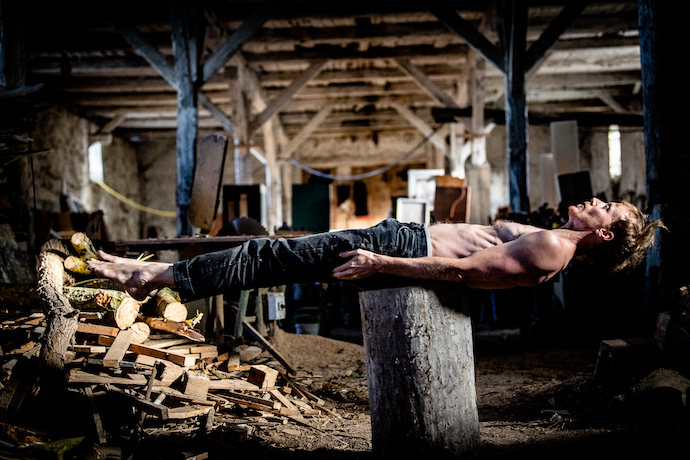
«The black man insists, by whatever means he finds at his disposal, that the white man cease to regard him as an exotic rarity and recognize him as a hu-man being. This is a very charged and difficult moment, for there is a great deal of will power involved in the white man's naiveté. Most people are not naturally reflective any more than they are naturally malicious, and the white man prefers to keep the black man at a certain human remove because it is easier for him thus to preserve his simplicity and avoid being called to account for crimes committed by his forefathers, or his neighbors.» (James Baldwin - Stranger in the Village).
Das Zitat von James Baldwin als Audio:
«And then the occasion arose when I had to meet the white man’s eyes. An unfamiliar weight burdened me. The real world challenged my claims. In the white world the man of color encounters difficulties in the development of his bodily schema. Consciousness of the body is solely a negating activity. It is a third-person consciousness.» (Frantz Fanon - Black Skin, White Masks)
The quote by Frantz Fanon as Audio:
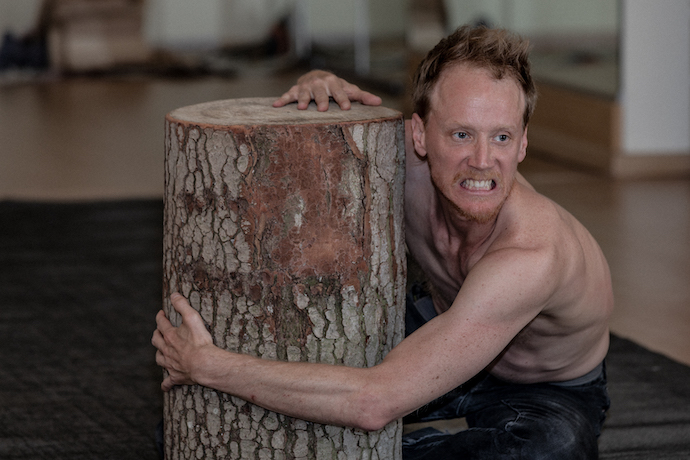
Episode 4 REACTING (in English):
«By the outbreak of World War I, European imperialism had gained control of nearly 85% of the earth’s habitable surface…while the resulting encounter of cultures led to what Aimé Cesaire frequently termed the ‹colonial shock›. The new colonial powers were curious about the extent and content of their domain. Human zoos served ideological and propagandist purposes by attempting to convince a skeptical metropolitan population that the colonial adventure was working and that it was worth the cost. ‹Savages› soon become ‹natives› on their way to becoming ‹colonial subjects› and even ‘‹mmigrants› according to the official scheme of cultural and political evolution. Their transformation from ‹objects of curiosity› to ‹subjects on display› followed the itinerary of racialization that informed public beliefs in the latter half of the nineteenth century. Situated at the juncture between science and show biz, these ‹living museums›, as they were sometimes called, contributed profoundly to Western perceptions and stereotypes of the exotic Other.» (Walter Putnam - ‘Please don’t feed the natives!’ Human Zoos, Colonial Desire and Bodies on Display)
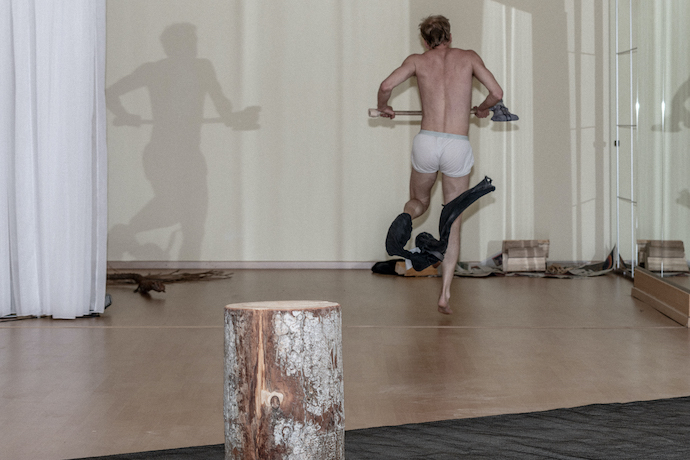
«The angry black woman cannot be reasoned with. She argues back. She is not docile, sweet or agreeable, like expectations of white femininity. Her anger makes her ugly and undesirable. It’s for that reason she’ll never find a husband, and if she does, she will emasculate him. Emasculation as a concept is one that requires the rigid upholding of sexist gender roles. The angry black woman stereotype wields misogyny as a stick to beat black women over the head with. That angry black women appear to emasculate men is sexist because it makes assumptions about the characteristics of men that inevitably limits the scope of their humanity. To believe in emasculation, you have to believe that masculinity is about power, and strength, and dominance…The ‘angry black woman’ phrase says more about maleness and whiteness than it does about black women.» (Reni Eddo-Lodge, Why I’m No Longer Talking to White People About Race)
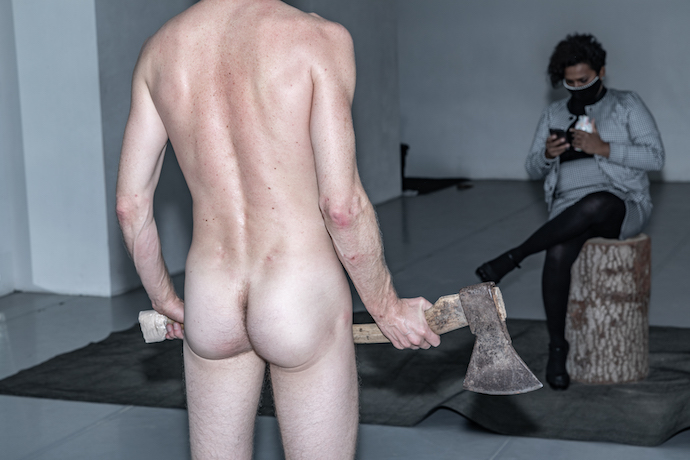
«Identifying with neither the phallocentric gaze nor construction of white womanhood as lack, critical black female spectators construct a theory of looking relations where….visual delight is the pleasure of interrogation.» (bell hooks - from the chapter ‘The Oppositional Gaze: Black Female Spectators’ in Black Looks: Race and Representation)
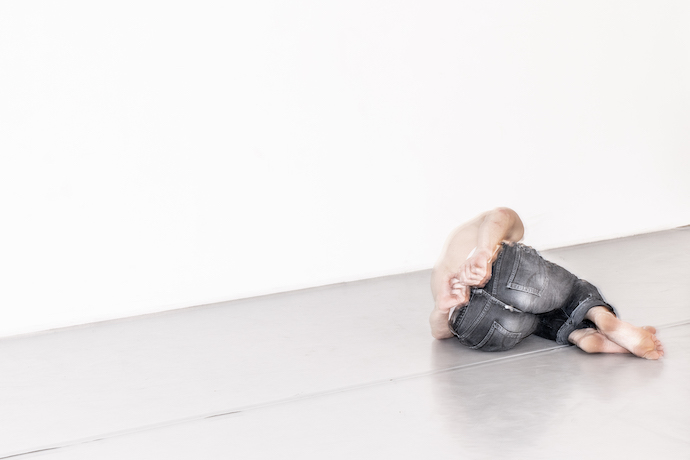
Credits
Künstlerische Co-Leitung: Choreografie Chris Leuenberger. Künstlerische Co-Leitung: Text Fatin Abbas. Performance: Matthew Rogers, Living Smile Vidya. Mentoring: Sally De Kunst. Dramaturgie: Marcel Schwald. Outside Eyes / Spezialistinnen: Pascale Altenburger, Serena Dankwa, Lea Martini, Monika Truong, Living Smile Vidya. Interview Partner*innen: JiHae Ko, Marcelo Kuna, Diego Mud, Sandeep TK, René Agbor, Christi Dufour. Sound Design, Text Aufzeichnung: Thomas Jeker. Licht Design: Daniel Tschanz. Stimme: Fatin Abbas. Grafik, Fotografie: Silvia Rohrbach. Video Aufzeichnung: Kai Wido Meyer. Kontakt/Management: Sabine Jud.Eine Produktion von Abbas / Leuenberger in Koproduktion mit der Dampfzentrale Bern.
Mit Unterstützung durch das Schloss Bröllin, Lo Studio Bellinzona, Kultur Stadt Bern, SWISSLOS/Kultur Kanton Bern, Burgergemeinde Bern, Bürgi-Willert-Stiftung, Schweizerische Interpretenstiftung, Netcetera, Gesellschaft zu Ober-Gerwern, Gesellschaft zu Zimmerleuten.
Fotocredits: Peter van Heesen & Silvia Rohrbach
